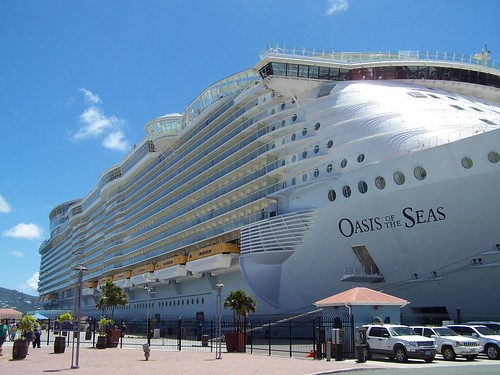James Penstone
This user hasn't shared any biographical information
Posts by James Penstone
Composition in Photography
May 28th
This post includes a few useful links and one video to help you explore one of the most important elements of good photography … composition.
10 Top Photography Composition Rules by PhotographyMad
5 Elements of Composition in Photography by Digital Photography School
5 More Elements of Composition in Photography by Digital Photography School
25 Photo Composition Tips by photofocus
The Rule of Thirds is explained in a bit more detail here:
Rule of Thirds by Digital Photography School

Discuss how and why different income groups have different expenditure patterns (spending, saving and borrowing).
May 25th
Here is a past paper question related to this topic (in italics below). You should try to answer both parts for this syllabus objective.
4 It is stated that the richest households in a country spend under 15 % of their income on food while the poorest households spend over 30 %.
(a) Do these figures mean that the actual amount spent on food by the richest households is lower than that spent by the poorest households? Explain your answer. [4]
As a way into this question, discuss it with others in a group if possible, and the try to draw a picture to illustrate your answer without any words.
(b) Daniel recently finished training to be a dentist and started his first job. Samira works in a bank and is now in a senior position. Describe how the expenditure pattern of these two people might be different. [6] (May 2008)
To help with part b) try this activity …
Complete, as an individual or in a group, one of the columns on this spreadsheet. Use both research and common sense. Your answers are not supposed to be real because these are not real people, but they should be realistic.
Opengecko Expenditure Patterns and Socioeconomic Profiles Compared across 4 People
(This is a Google Spreadsheet – you should either download it as another file format or make a copy so that you can edit the spreadsheet online).
Economies of Scale
May 24th
Image: Some rights reserved by Cory M. Grenier
Starter
What cost advantages are there for big firms? Watch the video clip below.
On board world’s biggest cruise ship Oasis of the Seas
Image: Some rights reserved by Paul Dickerson
Resources
There are five main types of Economies of Scale for you to consider. The resources give a little bit of information about each one.
1) Purchasing Economies
2) Financial Economies
3) Managerial Economies
Study this business structure and consider how it is more efficient than a company which is a sole trader
4) Technical Economies
5) Marketing Economies
General resource for cross-referencing
Demonstrating Your Understanding
Level 3 Activity – Quite tricky – makes you think. Complete the first two tasks at the end of this page, but use the 5 economies of scale above. The scores in brackets are not the same as IGCSE scores, so you can ignore them. As you do so, be sure to explain what each type of economies of scale means Extra Task – include Risk Bearing Economies.
Level 2 Activity – Medium Difficulty – Think of some of the ways in which IKEA uses the five Economies of Scale listed above. even if you can’t give specifics, give examples that you think would apply to IKEA (or another large retail firm). This pdf file referring to IKEA in Bangkok, Thailand, might give you some ideas. As you do so, be sure to explain what each type of economies of scale means. Extra Task – include Risk Bearing Economies.
Level 1 Activity – Accessible and Useful. Extra Task – research and comment on Risk Bearing Economies. Having done this you should be able to answer a question like this ‘Explain what is meant by economies of scale’ (6)
Describe pricing and output policies in perfect competition and monopoly
May 13th
First, you need to find out answers to the following broad questions:
- What is perfect competition?
- What is a monopoly?
The video below is a very good starting point. You can ignore the early bit on costs.
Activity 1) Research how these two market types set their price and output. Can they control these two things (price and output)? If so, how? If not why not? Can you find simple diagrams to help explain these. Be careful though – this can lead to complex economics that is not needed for IGCES economics. You don’t need diagrams which include marginal cost, marginal revenue, etc, Check with your teacher if possible.
Activity 2): Create two collage images, made up of photographs you have found online, ideally those with a creative commons license (you are going to publish your collage online). one for perfect competition and one for monopoly to show a range of examples and characteristics of each type of market structure. As part of this, make sure you include images to help explain your answer to Activity 1. Ensure that the image size is maximum 5MB for each collage.
Activity 3): Sign up for an account at Thinglink. Upload your images and make them interactive, such that they reveal the key aspects of perfect competition and monopolies. Make sure you also include your answer to Activity 1.
Cooperatives
May 10th
Find out what cooperatives are, what they do and how they work by viewing these videos. Try to spot the difference between those which are producer cooperatives and those which are consumer cooperatives:
From the Singapore National Co-operative Federation:
Extended Essay for IB Economics
Apr 6th
Some useful web sites to get you thinking about choosing your topic / question, and your overall approach to the EE:
General EE advice:
http://en.wikibooks.org/wiki/International_Baccalaureate/Extended_Essay_Tips
The official IBO diploma Programme Extended Essay Guide can be downloaded from a variety of websites, such as the following:
http://library.tedankara.k12.tr/IB/IB_Extended_Essay_guide.pdf
It is well worth reading the Economics section in the above guide (check the book marks on the left hand side, Details – subject specific).
Other economics specific advice:
http://economicsontoast.blogspot.com/2007/02/initial-guidance-for-extended-essay-in.html
http://ajmccarthynz.wordpress.com/2010/09/12/extended-essays/
http://www.timwoods.org/2011/09/05/how-to-write-your-extended-essay-getting-started/
Using these web-sites you can view real examples of IB Economics Extended Essays. Take care to see what standard they are:
http://schools.sd42.ca/gsslibrary/?page_id=805
http://www.tuition.com.hk/dried-seafood-hong-kong.htm
http://issuu.com/revisioncourses/docs/extended_essay_economics
Now, when you get around to planning your essay, you might consider using this interactive planner:
http://www.readwritethink.org/files/resources/interactives/essaymap/
The IMF and The World Bank
Mar 28th
In the 2005 IB Economics syllabus you are required to evaluate the role of the International Monetary Fund (IMF) and the World Bank in their contributions to growth and development. In simple terms, you should know what they do, and their advantages and disadvantages. Interestingly, much of the online media out there is overtly critical of these international financial institutions. Try to maintain some balance in your evaluation by acknowledging benefits as well as explaining the disadvantages. Here are some key resources – you should spot whether they are biased in favour of or against the IMF and WB (or neutral).
a) Websites
International Monetary Fund
http://www.globalization101.org/imf-introduction/
b) Videos
Finally, if you have time (one and a half hours), you might choose to watch a very critical but fascinating documentary film called Life and Debt – I highly recommend this, but it can be disturbing at times.
Types of Firm (Types of Business)
Mar 26th
The Cambridge IGCSE Economics syllabus requires students to describe (and therefore understand) the following as part of section 4.4 The private firm as producer and employer:
the type of business organisation in the public and private sectors: sole proprietors,
partnerships, private companies, public companies, multi-nationals, co-operatives, public corporations;
To start us thinking about some of these, we can refer to these youtube videos which essentially cover the same information.
1) Main Types of Business (by Yerlanstudent):
2) Sole Proprietorship (by humberjeff)
Notice that these videos are US based. Corporations are limited companies (but not all limited companies are corporations). We need to be able to distinguish between private and public limited companies.
The following websites are useful resources for understanding the differences between the different types of business organisation further:
1) Tutor2U: gcse economics – firms – types of business ownership
2) biz/ed: public liability (but also a comparison of business types) [more complex notes]
3) thetimes100: Types of businesses [note that the tables in boxes have overlap between the columns so need a bit of concentration]
Additional revision pages:
1) Excellent summary powerpoint hosted at tutor2u (you don’t need to know franchises on this syllabus)
2) Business Structure on GCSE Bitesize (primarily for Business Studies)
Do Women Earn Less than Men?
Mar 15th
This post takes the same title as that of the impressive 4 minute youtube clip by LearnLiberty.org. Helps with learning about why women – on average – tend to earn less than men, as part of the IGCSE Economics course.
Understanding why wages differ between jobs using supply and demand analysis
Mar 15th

Image: Some rights reserved by 401K
Three websites to help you understand how wages differ using supply and demand diagram analysis.
Why the distribution of income in the UK is unequal by economicshelp.org
Wage differentials between occupations by tutor2u.net
A bit more advanced:





